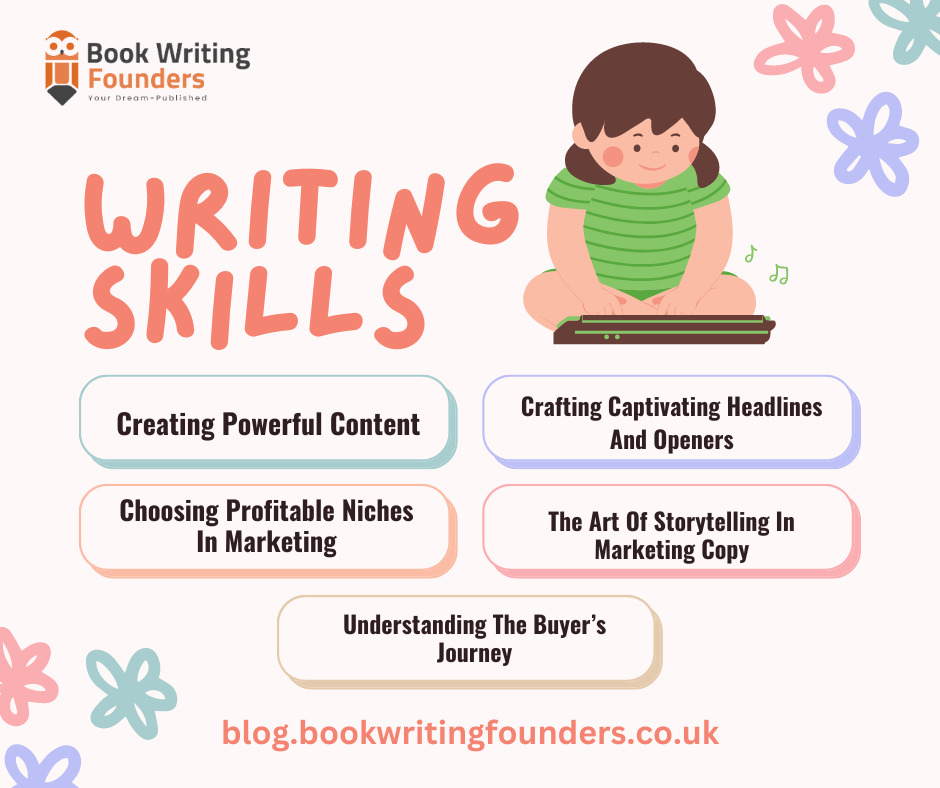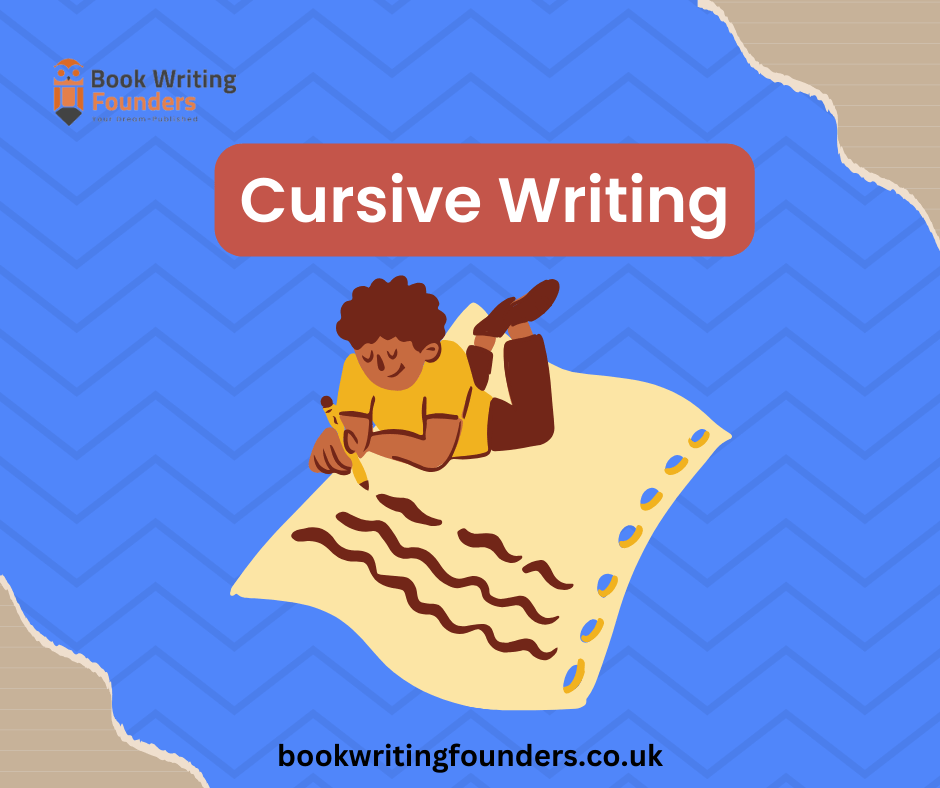
Writing
Introduction
In a world buzzing with emails, texts, and emojis, the art of writing a good old-fashioned letter may seem like a relic from the past. But let’s not forget letters are like time capsules, preserving our thoughts, emotions, and stories in a tangible form.
Whether it’s a heartfelt note to a loved one, a formal job application, or a friendly pen pal letter, the magic of letter writing endures.
In this blog, we’re diving deep into the world of letters. We’ll explore different types of letters and their formats and provide you with some examples.
So, whether you’re a seasoned letter writer or a curious beginner, join the Book Writing Founders UK and learn how to write amazing letters with this guide.
How to Write a Letter?
Letter writing may seem old-fashioned in today’s digital age, but it’s still a valuable skill to have. Whether it’s a friendly note, a formal letter, or a heartfelt message, the ability to compose a well-structured letter can make a lasting impression. Learn more about the art of letter writing in our article on what is a journal article.
Here is the process of letter writing in 10 easy-to-follow steps.
Step 1: Choose Your Purpose
Before you start writing, determine why you’re writing the letter. Is it to express gratitude, convey important information, or request something? Knowing your purpose will help you shape the content appropriately.
Step 2: Identify Your Audience
Consider who will be reading your letter. Is it a friend, a family member, a colleague, or a formal institution? Understanding your audience will guide your tone and choice of words.
Step 3: Gather Your Supplies
You’ll need some basic supplies to get started: paper, a pen, or a computer if you’re typing. Make sure you have everything ready before you begin.
Step 4: Format Your Letter
A well-structured letter has three main parts: the heading, the body, and the closing. Use the following format:
-
Heading:
Your address (top-right corner)
Date (beneath your address)
Recipient’s address (left-aligned)
-
Body:
Introduction
Main message or content
Conclusion
-
Closing:
Sincerely,
Your name (signature if it’s a physical letter)
Step 5: Start with a Greeting
Begin your letter with a friendly greeting. Common greetings include “Dear,” “Hello,” or “Hi.” Use the recipient’s name if you know it, followed by a comma.
Step 6: Write a Clear Introduction
In the introduction, briefly explain the purpose of your letter. Mention why you’re writing and any relevant context. This sets the stage for the rest of your letter.
Step 7: Develop the Main Message
The body of your letter is where you’ll convey your message. Use paragraphs to organize your thoughts. Transition words like “firstly,” “next,” and “finally” can help maintain a smooth flow as you move from one point to another.
Step 8: Summarize and Conclude
In the concluding section, recap your main points and restate the purpose of your letter. Express any final thoughts or sentiments. Transition words like “in conclusion,” “to sum up,” or “to wrap things up” can signal that you’re reaching the end of your letter.
Step 9: Sign Off Politely
Use a polite closing, such as “Sincerely,” “Best regards,” or “Yours truly,” followed by a comma. Then, sign your name. If you’re typing the letter, simply type your name below the closing.
Step 10: Review and Edit
Before sending or mailing your letter, take a moment to review it. Check for spelling and grammar errors, and make sure the content is clear and concise. Editing is crucial to ensure your message is well-received.
Types of Letters
Letters also come in various types, each serving a specific purpose, so let’s review a few types of them.
1.1 Personal Letters
Personal letters are used for informal communication with friends, family, or acquaintances. They allow you to express your thoughts and emotions in a relaxed manner.
Here’s a format you can follow:
-
Heading:
Your address (top-right corner)
Date (beneath your address)
Recipient’s address (left-aligned)
-
Greeting:
Begin with a friendly greeting, e.g., “Dear Mom,”
-
Body:
Start with an introduction and share your message.
Use paragraphs for different ideas.
Use transition words like “first,” “next,” and “finally” for smooth transitions.
Be conversational and open.
-
Closing:
Use a warm closing, like “Love,” “Best wishes,” or “Take care,”
Sign your name below.
Business Letters
Business letters are formal documents used for professional communication. They often have a specific structure and tone.
Here’s a standard format:
-
Heading:
Your address (top-right corner)
Date (beneath your address)
Recipient’s address (left-aligned)
-
Greeting:
Begin formally with “Dear Mr. Smith,” or use the recipient’s title and last name.
-
Body:
Start with a clear and concise introduction.
Use paragraphs for different points.
Transition words like “furthermore” and “in addition” help with coherence.
Maintain a professional tone.
-
Closing:
Use a formal closing, e.g., “Sincerely” or “Yours faithfully,”
Leave space for your handwritten signature.
Type your name below your signature.
1.3 Thank-You Letters
Thank-you letters express gratitude and appreciation. They can be either formal or informal. Here’s a simple format:
-
Heading:
Your address (top-right corner)
Date (beneath your address)
Recipient’s address (left-aligned)
-
Greeting:
Start with a warm greeting, e.g., “Dear Aunt Sarah,”
-
Body:
Begin with thanks and mention the reason.
Use paragraphs to elaborate.
Transition words like “I wanted to express my gratitude for” help convey your message effectively.
Be sincere and heartfelt.
-
Closing:
Choose a closing that fits the tone, such as “With heartfelt thanks” or “Gratefully yours,”
Sign your name below.
Section 2: Formats and Styles
Explore more about letter formats and styles in our post on how to say farewell to coworkers leaving message for colleague. Letters can take on different formats and styles, depending on the occasion and the relationship between the sender and the recipient. Here are some common formats:
2.1 Block Format
The block format is widely used for business letters. In this format, everything, including the heading, greeting, body, and closing, is left-aligned. There is a space between each section.
2.2 Modified Block Format
Similar to the block format, the modified block format aligns the heading, closing, and date to the right. The rest of the content is left-aligned. This format is often chosen for a more modern look.
2.3 Semi-Block Format
In the semi-block format, the heading, closing, and date are aligned to the right, but the paragraphs in the body are indented. This format is suitable for business letters and offers a balance between formality and modern style.
2.4 Indented Format
In this format, each paragraph in the body of the letter is indented. The heading, greeting, and closing are typically aligned to the left. The indented format is commonly used for personal letters.
The Art of Letter Writing: 5 Inspiring Examples
Examples Letter writing is a timeless form of communication that can convey emotions, thoughts, and information in a personal and meaningful way. Here are 5 examples of letter writing. Dive into inspiring examples of letter writing in our blog post on what is a bid writer.
Example 1: A Heartfelt Thank-You Letter
Dear Grandma,
I hope this letter finds you in good health and high spirits. I wanted to take a moment to express my heartfelt thanks for the wonderful birthday gift you sent me. Your thoughtfulness warmed my heart and made my day extra special.
Firstly, the moment I unwrapped the gift and saw the beautiful book you chose for me, I couldn’t help but smile. It’s a book by my favorite author, and I can’t wait to dive into its pages.
Next, I must tell you how much I appreciate the time you took to select such a meaningful present. It means the world to me that you remembered my love for this author.
Finally, your kind words in the birthday card brought tears of joy to my eyes. Your love and support mean everything to me, and I cherish every moment we spend together.
In conclusion, I want you to know how grateful I am to have you as my grandma. Your love and thoughtfulness fill my heart with warmth and happiness. I love you more than words can express.
With heartfelt thanks, [Your Name]
Example 2: A Friendly Letter to a Pen Pal
Hey there,
I hope you’re doing great and having lots of fun. I wanted to share some cool stuff with you.
Firstly, I went on a camping trip with my family last weekend. We roasted marshmallows and told spooky stories around the campfire. It was super fun!
Next, I started a new hobby – painting. I’m not very good yet, but it’s so much fun to create colorful pictures.
Now, here’s the funny part. My cat, Whiskers, climbed a tree and got stuck! We had to call the fire department to help him down. Silly cat!
In conclusion, I can’t wait to hear what you’ve been up to. Write back soon, okay?
Your pal, [Your Name]
Example 3: A Formal Job Application Letter
[Your Address] [City, State, Zip Code] [Date]
[Employer’s Name] [Company Name] [Company Address] [City, State, Zip Code]
Dear Mr./Ms. [Employer’s Last Name],
I am writing to apply for the [Job Title] position at [Company Name], as advertised on [Where You Found the Job Listing].
Firstly, I am excited to express my strong interest in this role, as it aligns perfectly with my skills and passion for [Relevant Skill/Field]. My experience working as a [Previous Job Title] at [Previous Company] has equipped me with the necessary skills and knowledge to excel in this position.
Next, I am highly impressed by [Company Name]’s commitment to [Company’s Mission or Values]. Your innovative approach to [Company’s Focus] inspires me, and I would be honored to contribute to your team.
In addition, I have attached my resume, which provides a comprehensive overview of my qualifications, including my [Relevant Skill 1] and [Relevant Skill 2].
In conclusion, I am eager to discuss how my background and enthusiasm for [Company’s Focus] can benefit [Company Name]. Thank you for considering my application. I look forward to the opportunity to interview with you.
Sincerely, [Your Full Name]
Example 4: A Sympathy Letter
Dear [Recipient’s Name],
I hope this letter finds you surrounded by the love and support of your family and friends. I wanted to extend my deepest condolences for your loss.
Firstly, I want you to know that I am here for you during this difficult time. Losing someone we love is incredibly painful, and it’s okay to grieve in your way.
Next, I have fond memories of [Deceased’s Name]. They were a truly remarkable person who touched the lives of many with their kindness and warmth.
In addition, I want you to know that you can lean on me whenever you need to talk or share your feelings. It’s important to remember that you are not alone in this journey of healing.
In conclusion, please accept my heartfelt sympathies. [Deceased’s Name] will always be remembered with love and affection.
With deepest sympathy, [Your Name]
Example 5: A Letter to Your Future Self
Dear Future Me,
I hope you’re doing amazing and living your dreams. I’m writing this letter to remind you of some important things.
Firstly, always believe in yourself. You have the power to achieve whatever you set your mind to, so never doubt your abilities.
Next, cherish the people you love. They are your support system, and they bring joy and meaning to your life.
In addition, keep exploring the world. Travel to new places, meet new people and learn as much as you can. Life is an incredible adventure.
In conclusion, remember to stay true to your values and never lose sight of what truly matters. You’ve got this!
With love and optimism, [Your Name]
Conclusion
And there you have it, dear readers – a glimpse into the delightful world of letter writing! We’ve covered the basics of various letter types their formats, and even shared examples to help you out.





